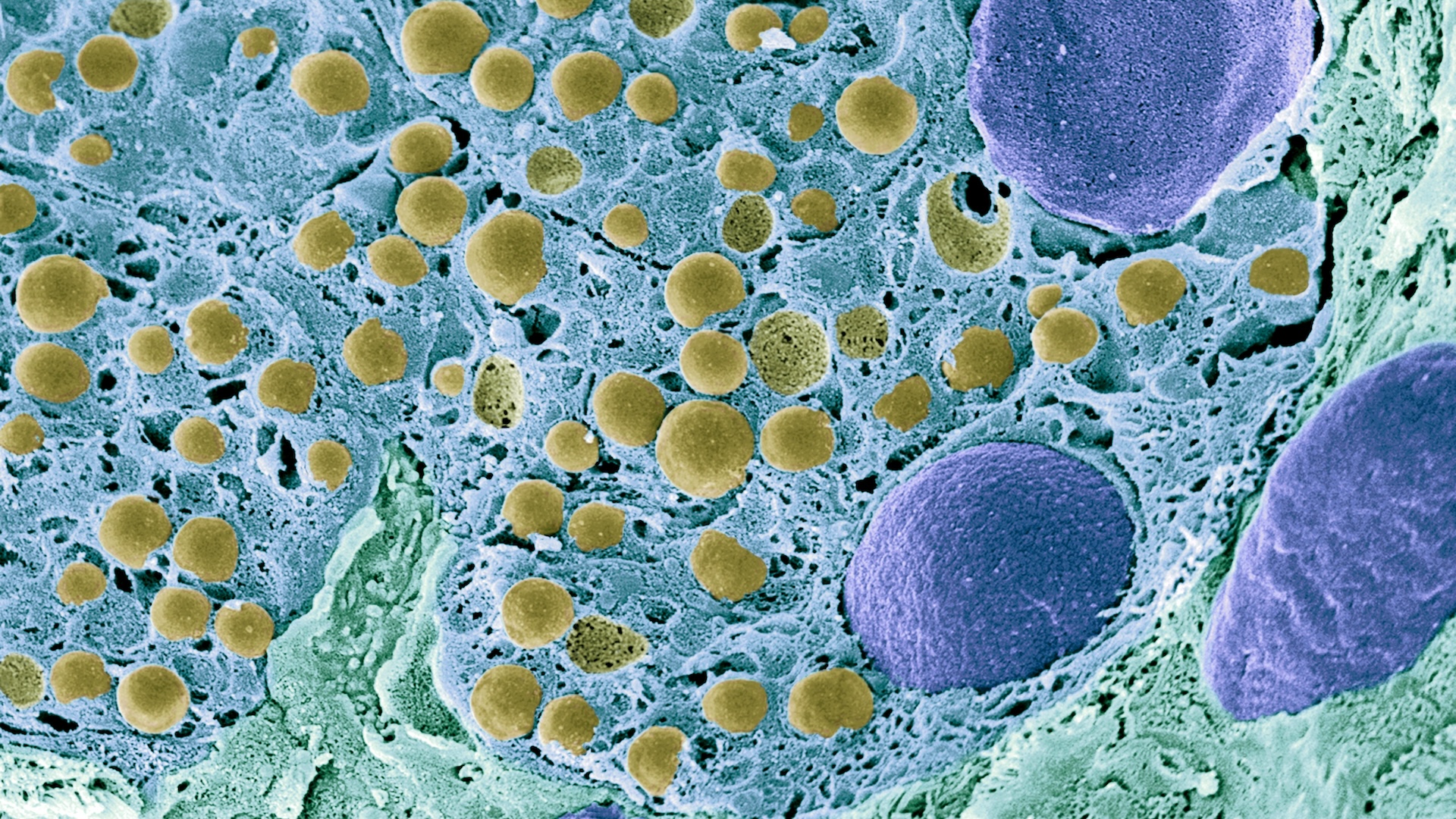
For the first time, scientists in China reprogrammed a woman's fat cells to turn them into insulin-making pancreatic cells that reversed her type 1 diabetes.
The feat adds to a growing body of evidence that reprogrammed stem cells could one day be used to treat or cure the chronic disease. The patient treated in the recent study still doesn't need any injected insulin a year out from her procedure.
These findings are "very exciting," said Dr. Kevan Herold, the C.N.H. Long professor of immunobiology and of medicine at Yale School of Medicine, who was not involved in the research.
Insulin is the chemical key that allows sugar molecules to exit the bloodstream and enter cells, where they can be used for fuel. In type 1 diabetes, however, the immune system destroys the body's insulin-producing cells, which are nestled within larger "mini-organs" within the pancreas, called islets.
Related: Drug could reduce need for insulin in type 1 diabetes, early trial hints
Without insulin, cells are starved of fuel while blood sugar levels rise. In extreme cases, people die as the body churns out acidic compounds, known as ketones, in a bid to make enough energy for cells to survive.
In the new study, which was published Thursday (Oct. 31) in the journal Cell, scientists took fat cells from a patient with type 1 diabetes and used chemicals to revert them back into "pluripotent" stem cells, meaning they could turn into any type of cell.
After reverting the cells to this state, the scientists chemically coaxed them to become islet cells. These new islet cells were then implanted in the patient's abdomen.
Before undergoing this experimental treatment, the patient struggled to control her blood sugar, spending less than half her time in a "target" healthy blood sugar range, said study lead author Hongkui Deng, a researcher at the Peking-Tsinghua Center for Life Sciences at Peking University in Beijing. After the patient's cell transplant, her time in the target zone "improved to over 98%," Deng told Live Science in an email.
By 75 days after the transplant, the patient no longer needed to inject insulin to control her blood sugar.
"The rapidity with which the patient showed reversal of diabetes and achieved insulin independence after transplantation was surprising," Deng said. "This finding suggested remarkable potential of this therapeutic strategy.".
Transplanting islet cells into patients isn't a new approach. For three decades, scientists have harvested islets from donated bodies and then transplanted the cells into the livers of patients with type 1 diabetes. However, there are a limited number of donors, and transplant recipients must take strong drugs for the rest of their lives to suppress the immune system and prevent their new mini-organs from being rejected. As a result, only patients who need other transplants, such as kidney or liver transplants, typically receive donor islet cells.
The patient in the new study was no different in that respect. She had previously received a liver transplant and so was on strong immune-suppressing drugs. Nevertheless, the new kind of islet transplant she received marks an advance: Unlike cells from donated bodies, stem cells offer a potentially unlimited source of new islets.
The cells grafted into the belly did better than those implanted in the liver usually do, showing "markedly improved insulin secretion," Deng said. What's more, the abdomen is easily accessible and can be scanned using MRI. That means the implanted cells can be easily monitored for safety and removed if they start to fail, he added.
The new study is part of a growing body of evidence that islets derived from stem cells can reverse type 1 diabetes, at least for a time. For instance, Vertex Pharmaceuticals is developing embryonic-stem-cell-derived islets and has shown that these cells can normalize blood sugar levels, at least in the handful of patients tested so far.
While the new stem cell treatment may not face the traditional risks associated with organ rejection, the transplanted islets could still be targeted for destruction by the immune system. For this treatment to be appropriate for more patients with type 1 diabetes, scientists need to find a way to make stem cell transplants invisible to the immune system without the use of strong immunosuppressants.







